Bill O'Malley
Reviews By Author
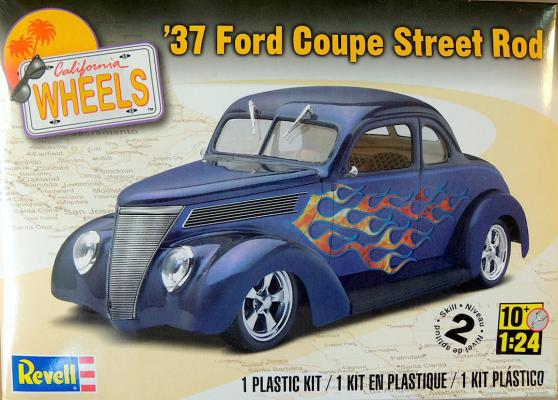
|
’37 Ford Coupe Street RodPublished:
IntroductionThis is one of the all time great car designs with smooth lines and the free-flowing curves of the fenders. This classic has always been popular with hot rodders. The Revell kit of the ’37 coupe has been issued and re-issued many times, and this is the latest version. This version seems to be mostly a repackaging, as most of the parts and options were available in previous releases. The kit is showing it’s age with soft detailing, some fit issues, and a completely confusing front suspension. In spite of the shortcomings the kit still builds into a nice hot rod model. The kit would be frustrating for an inexperienced modeler and would be better suited to an avid car modeler. Kit ContentsRevell’s description:
|

|
’62 Corvette GasserPublished:
This is a nice kit and a fun build. This kit is the second version of the ’62 Corvette released by Revell, following the 2012 release of the ’62 Corvette Roadster 2’n1 kit. The ’62 Gasser kit is for skill level III and ages 12+. The kit did not seem that difficult, and I think it would be fun for even advanced beginners. BackgroundThe Gasser kit recreates the ’62 Corvette converted by D&M Corvette Specialists into a street gasser with a blown small block Chevy engine. The original car’s body is nearly stock, and is replicated in the kit by the same stock body used in the Revell ’62 Roadster. The instructions and decals have a 2013 copyright. The underside of the floor pan/interior has a 2012 copyright and is likely the same as the earlier ’62 Roadster kit… more |
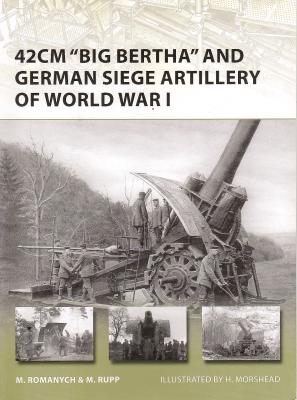
|
42 CM "Big Bertha" and German Siege Artillery of World War IPublished:
IntroductionFrom Osprey’s website:
|
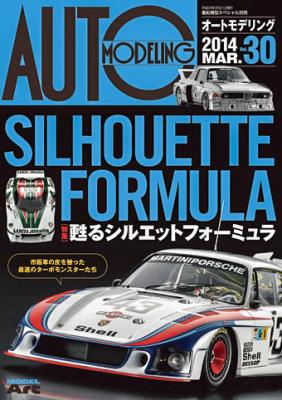
|
Auto Modeling Magazine, Volume 30, March 2014Published:
BackgroundAuto Modeling is a high quality Japanese language magazine from publisher ModelArt. Each edition features models of cars, mostly racecars, from various race series and eras. Many of the previous editions focused on Formula One cars in different time periods. The magazine has Japanese text, but some of the titles and headings are in English. The photographs are numerous and very high quality. ContentsThis issue, Volume 30, March 2014, has the following sections:
|
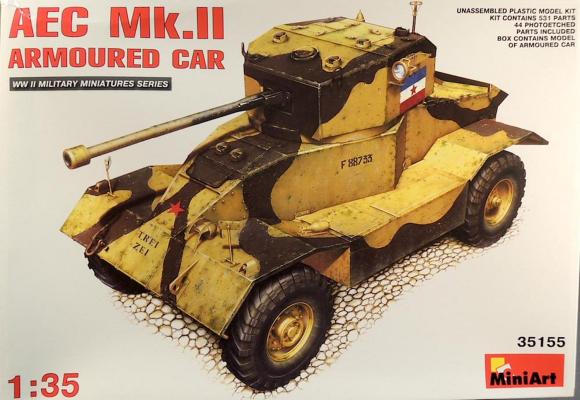
|
AEC Mk.II Armoured Car, Part 2 - Chassis, Engine, & ExteriorPublished:
Part 2 Review – Chassis, Engine, & ExteriorThis is the second of a series of reviews of the MiniArt AEC Mk. II Armoured Car kit. Part 1 previously reviewed the kit contents and assembly of the driver’s compartment. This review includes the chassis, engine, and exterior. A subsequent review will include the turret and gun. Model Rectifier Corporation (MRC) has generously provided the review sample to IPMS. IntroductionThis is an excellent, highly detailed kit. The molding is very crisp with great detail, and the fit is excellent. There are a few difficult areas that will make the kit challenging for less experienced modelers, but it results in a nice, fun to build kit for more advanced & expert modelers. ChassisSteps 16, 17 and 18… more |
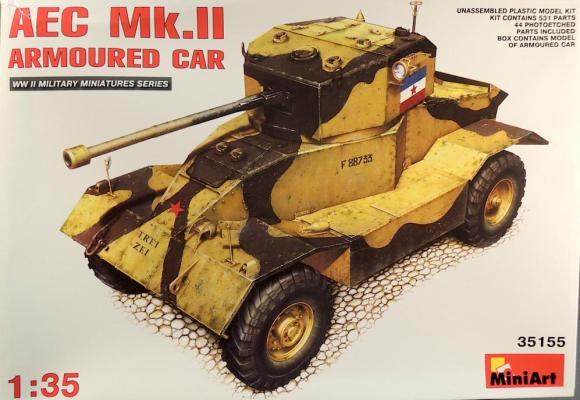
|
AEC Mk.II Armoured Car – Contents & Interior - Part 1Published:
Part 1 Review – Kit Contents & Interior AssemblyThis is the first of a series of reviews of the MiniArt AEC Mk. II Armoured Car kit. Model Rectifier Corporation (MRC) has generously provided the review sample to IPMS. This part reviews the kit contents and assembly of the driver’s compartment. Subsequent parts will include the engine, chassis, exterior, and turret. BackgroundThe AEC Armoured Cars are a series of heavy armored cars built by the Associated Equipment Company (AEC) during the Second World War. The first example, Mk. I, was demonstrated in early 1941 and an order was placed in June of that year. The Mk. I version carried a Valentine Mk II turret with 2-pounder gun. Vehicles of later variant designs carried heavier armament. The Mk… more |

|
MK I "Female" British Tank, Somme Battle Period, 1916Published:
Tank HistoryA bit of research on Wikipedia reveals that the British Mark I tank entered service in August 1916, becoming the world’s first combat tank. It was developed during World War I to combat the trenches and machine guns that dominated the battlefields of the Western Front. Despite the primitive nature of the first “tank,” a designation chosen to maintain secrecy, it was able to deal successfully with the various tasks found on the battlefields: small-arms fire, fortified enemy positions, challenging terrain, and the need to carry supplies. The Mark I’s first combat usage was on September 15, 1916, during the Battle of Flers-Courcelette, part of the Somme Offensive. Kit ContentsThe kit includes 54 parts, seven photoetch parts, and vinyl ‘rubber band… more |
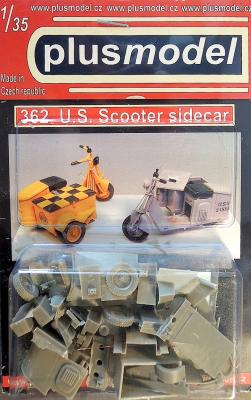
|
U.S. Scooter SidecarPublished:
This is another in the Cushman Scooter series of models recently released by Plus Model. Cushman made 4,734 airborne scooters for the military beginning in 1944. The rugged, simple Model 53 could travel through water, climb a 25 percent grade and had a range of approximately 100 miles. Some scooters had a hitch to pull a utility cart. This version of the Cushman airborne scooter was configured to carry a sidecar with either an additional seat or a utility bin. Kit ContentsThe kit has 21 light gray resin parts, one clear headlamp, one piece of wire, four photoetch pieces, and one detail sheet. The instructions include three color schemes – U.S. Navy (gray), U.S. Army (olive drab) and Airfield Service (deep yellow). The resin is fairly soft and all of… more |
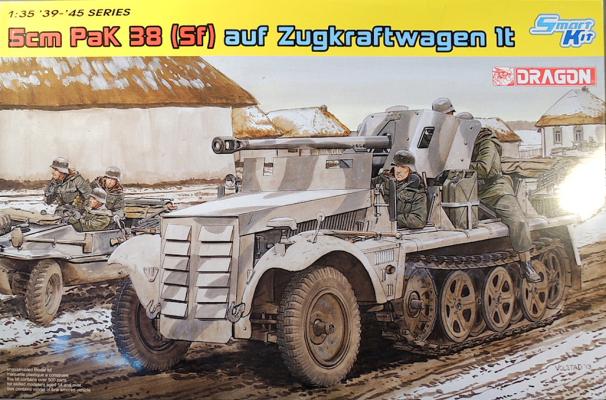
|
5cm Pak 38 auf Zugkraftwagen 1t – Smart KitPublished:
IntroductionThis is another in Dragon’s series of Sd.Kfz.10 halftracks and makes an interesting version that is a nice kit to assemble. Background from Dragon’s Website
Dragon originally… more |
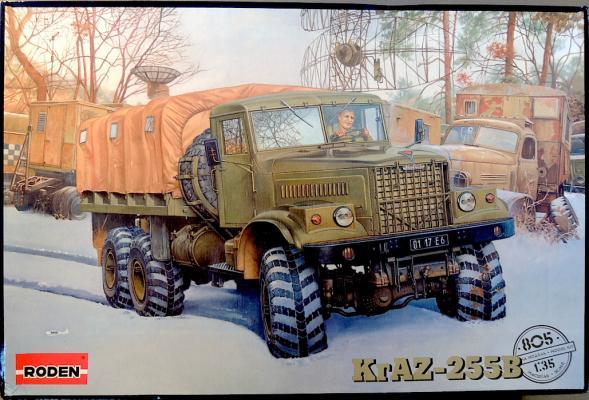
|
KrAZ-255bPublished:
IntroductionThis is one ‘Bear’ of a truck and one bear of a kit! The KrAZ weighs twelve tons, has a payload of seven and a half tons, and is nicknamed ‘The Bear’. The kit will definitely not fall together out of the box on a Sunday afternoon. A difficult kit to assemble, it’s worth the effort and builds into one massive truck! BackgroundExcerpt from the instructions:
|
